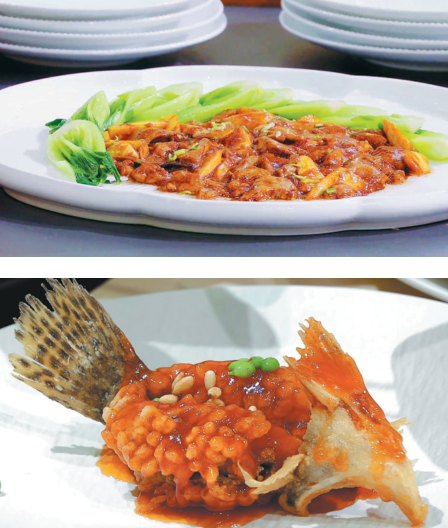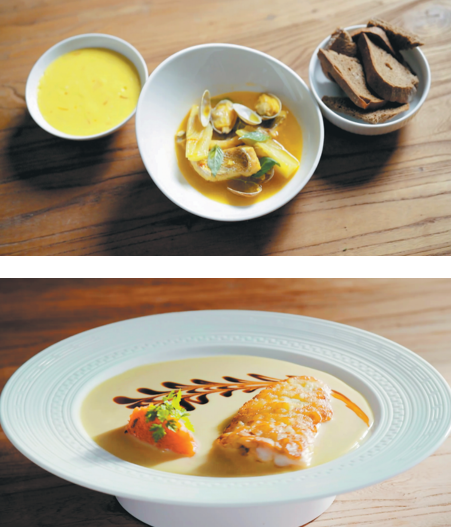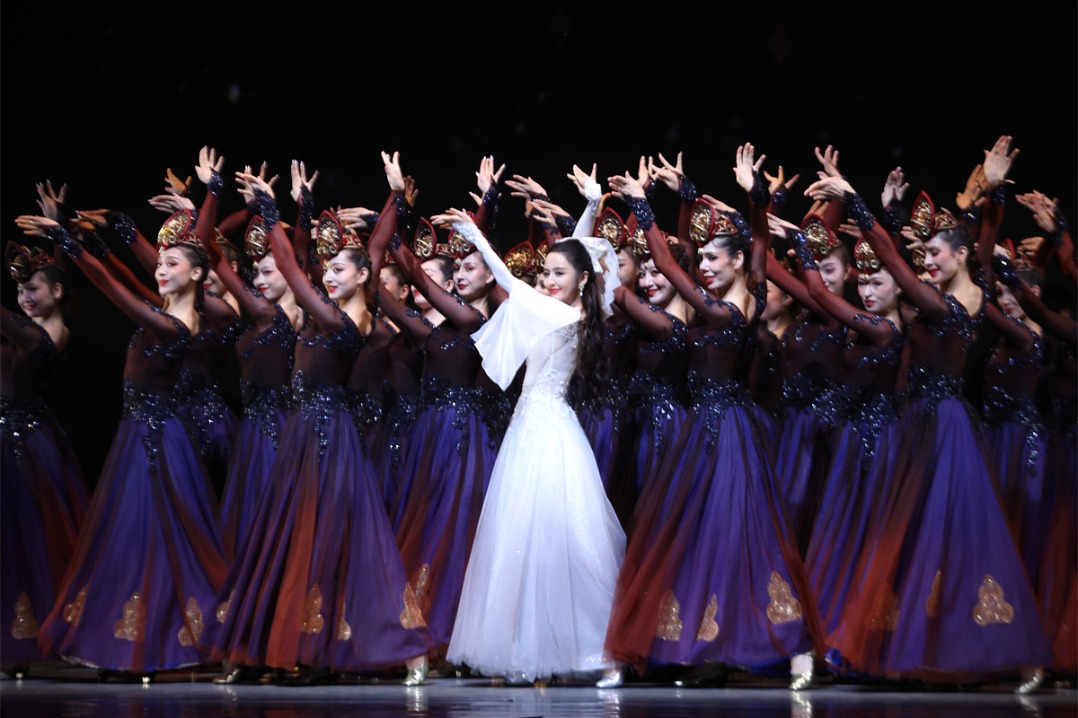Culinary culture serves up rich Sino-French exchange
TV show highlights similarities in ingredients and presentation of both countries' cuisine, as Xu Fan takes a bite.

In a tantalizing display that entices both the taste buds and the eyes, Qin Zhuonan — a 45-year-old chef from Shanghai — uses a pair of scissors to separate the belly of a black carp, extracting the liver with precision to avoid rupturing the gall bladder and spoiling the flavor.
She carefully repeats the process on 10 fish to make Qingyu Tufei, a renowned Shanghai delicacy, stir-frying the innards with wild rice shoots.
Within a tension-paced 30 minutes, the highly skilled chef completes the dish, earning praise from the four judges: Li Bo, a professor at Nanjing Normal University; renowned French chef Glenn Viel; Zhou Xiaoyan, vice-president of the China Cuisine Association; and Guillaume Gomez, a celebrated chef who has served four French presidents over 20 years.
The scene is featured in the third episode of The Peak of Cook — Chinese-French Chef King's Competition, a television program aimed to boost the culinary cultural exchanges between the two countries. It was created as a tribute to mark the 60th anniversary of China-France diplomatic ties.
Produced by China Media Group, the program — which began airing on CCTV-2 on July 20 — brings together 20 Chinese and French chefs, with four participating in each of the 10 episodes, engaging in culinary competitions themed on 10 ingredients ranging from fish to chicken and animal innards.
Tang Lin, the chief producer, tells China Daily that the major creators, after rounds of brainstorming, realized that culinary culture remains one of the most intriguing subjects to engage audiences from both countries.
Recalling that the production team was assigned to produce the program in early February, Tang reveals that the 20 chefs are 29 to 55 years old, with most of them being culinary veterans with rich experience.
Filmed between late April and July, the program invited various judges for different episodes, including French TV host Olivier Grandjean and Chinese actor Liu Ye. Onsite simultaneous interpretation was set up to facilitate real-time communication between the guests and participants.
Yang Zhongwen, the show's chief director, explains that they have selected the ten ingredients, which are the theme of each episode, based on a single criterion — ingredients that are commonly used in the local kitchens of both China and France.
Aside from widely cooked ingredients for most families, such as chicken, duck, fish, pork and beef, the program also includes shellfish such as shrimp and crab, as both countries have long coastlines, Yang adds.
"One ingredient that deserves special attention is innards. Despite the common belief that Western cuisine tends to avoid using animal organs, French restaurants have incorporated innards as a key ingredient, especially in their renowned dish Foie Gras," explains Yang.
The show also delves deep into the historical archives and artistic works behind all these foods. For example, the episode focusing on animal innards reveals that the culinary technique and flavor of innards were elevated during the Tang Dynasty (618-907), a result of foreign traders importing various spices, such as pepper, to the country through the Silk Road.
Another example is the episode focused on chicken which explores why the fowl is considered a fundamental and essential source of nutrient for the general public. Its opening sequence reviews famous quotes from historic figures, such as King Henry IV's wish for every peasant in France to have a chicken in his pot every Sunday, and Tang Dynasty poet Li Bai's lines depicting a prosperous countryside scene with chickens.
"In addition to exploring how these ingredients have cemented their place in the history of both countries, we have conducted extensive research to uncover their depictions in literary works", says Tang.
He gives the example of Bouillabaisse, a classic fish soup from southern France portrayed in the classic novel The Count of Monte Cristo by French author Alexandre Dumas.
"From historical texts and cultural masterpieces to scientific works, by exploring various records or depictions about these ingredients, we can uncover how they have transformed lives in different eras and influenced the world," Tang explains.
The Chinese and French culinary cultures share a common pursuit of meticulousness and delicacy in cooking techniques, as demonstrated in the program.
Illustrating this pursuit, in the fish-themed episode, Tao Xiaodong, a chef from Yangzhou in Jiangsu province, prepares a signature dish that involves deboning and carving the fish into an ornamental shape resembling a squirrel.
Corentin Delcroix — a popular food influencer born in Lille who is followed by 6 million Chinese fans online — prepares red mullet with potato scales, a dish created by a legendary French chef in the 1960s that requires intricate cutting skills to transform the potato into thin slices resembling fish scales.
"Audiences will notice that both China and France share a culinary pursuit, which is to make the dish presentation as exquisite as possible. We hope the audience will discover how food can serve as a platform for cultural exchanges and enhance mutual understanding about life," says Yang, the chief director.
Tang, the chief producer, concludes that by sharing human-interest stories from the judges, the program aims to ignite the audience's curiosity and inspire them to embark on a journey of exploration into the rich history and culture of both countries.



Today's Top News
- Tourists flock to locations featured in hot TV shows
- Intl volunteers serve as bridge linking Jingdezhen, world
- Global investors more bullish on Chinese assets
- Advanced weapon systems make debut
- Authority suspends antitrust investigation against DuPont
- Playing its appointed part in US' strategy will not bring Manila its desired rewards






























